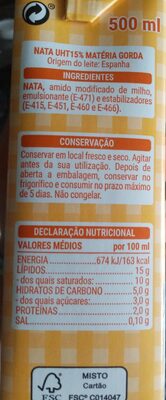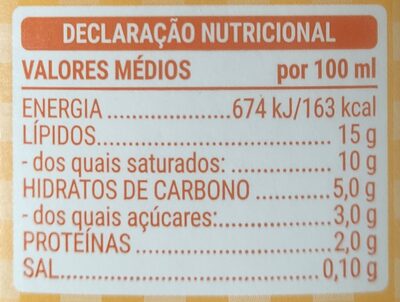nata cozinhar - Hacendado - 500 ml
This product page is not complete. You can help to complete it by editing it and adding more data from the photos we have, or by taking more photos using the app for Android or iPhone/iPad. Thank you!
×
Barcode: 8480000104632 (EAN / EAN-13)
Common name: Nata UHT15% Matéria Gorda
Quantity: 500 ml
Brands: Hacendado
Categories: Dairies, Creams, UHT Creams
Labels, certifications, awards:
FSC, FSC Mix, Green Dot

Traceability code: FSC C014047
Stores: Mercadona
Countries where sold: Portugal
Matching with your preferences
Environment
Carbon footprint
Packaging
Transportation
Report a problem
Data sources
Product added on by halal-app-chakib
Last edit of product page on by october-food-facts.
Product page also edited by inf, openfoodfacts-contributors, roboto-app.
If the data is incomplete or incorrect, you can complete or correct it by editing this page.








